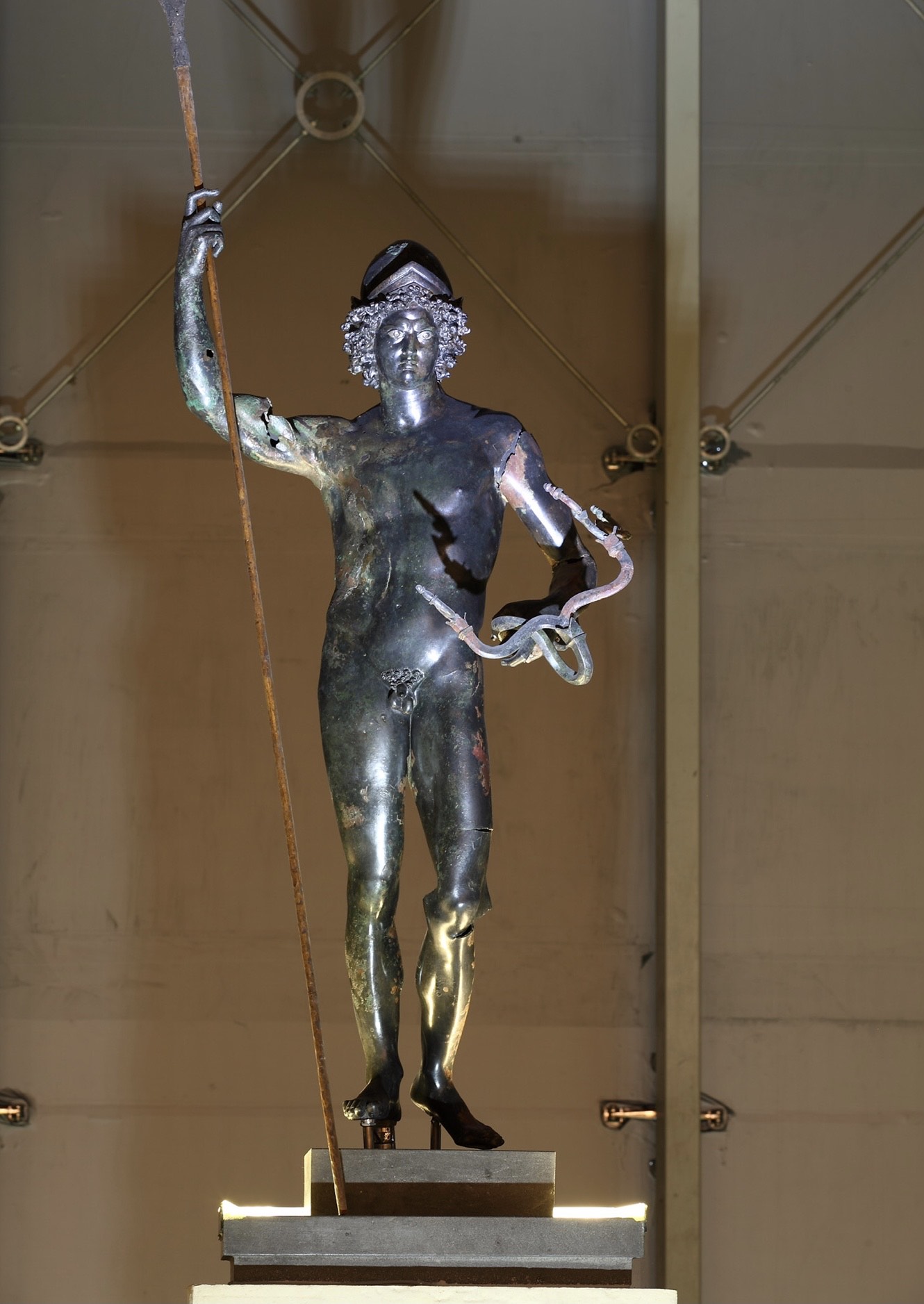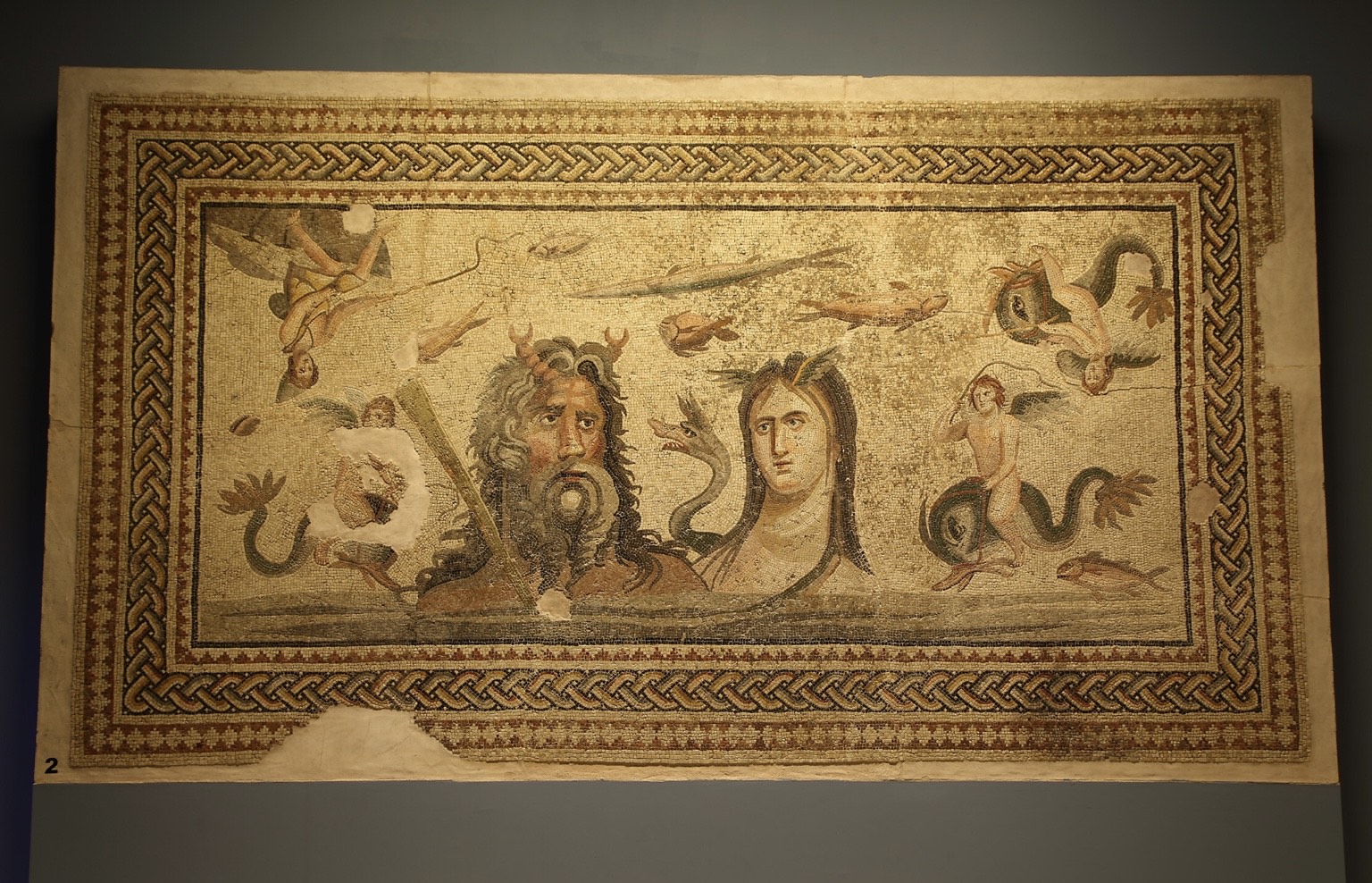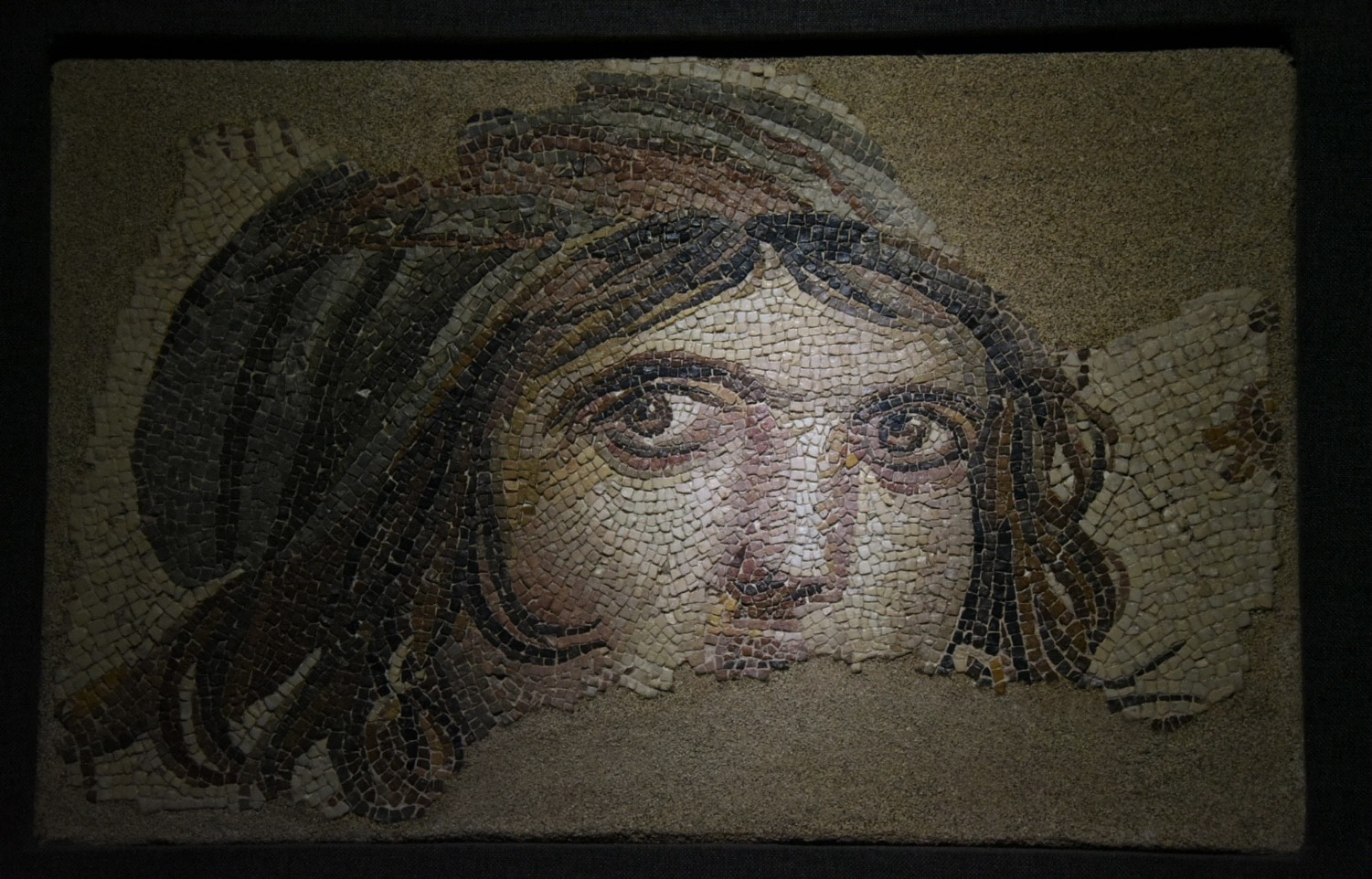Zeugma Mosaic Museum in Gaziantep, Poetry in Mosaics

The Ancient City Belkis/Zeugma is located on the banks of the Euphrates River, built on a land of approximately 20 thousand acres. It has maintained its importance in every period of history because it is in the shallowest passable part of the Euphrates and is a very strategic region in terms of military and trade.
Belkis/Zeugma, one of the largest cities of its time with a population of 80 thousand, was called by different names in different periods of history. Selevkos Nikator, one of the generals of Alexander the Great and later the King of Syria, combined his own name with the name of the Euphrates River and founded a city here in 300 BC called Seleucus Euphrates (Silifkesi of the Euphrates). Later, in the 1st century BC, the city came under Roman rule.

Mars Statue, Zeugma Mosaic Museum
With this change of domination, the name of the city changed and became "Zeugma", which means bridge, passage and is known all over the world. Villas were built on the slopes overlooking the Euphrates in Zeugma, which reached a population of 80 thousand in a short time due to the deployment of the Roman Empire's 4th Skitia Legion Garrison and trade. The population of 80 thousand people made Zeugma one of the largest cities in the world. Zeugma was smaller than its neighbor Antakya (Antiokheia) and Alexandria (Aleksandreia) in Egypt, but the same size as Athens (Athena). It was several times larger than Pompeii and London (Londinum).
The famous geographer Strabon also mentions Zeugma. It is known that important construction activities were carried out in Zeugma during the Hellenistic period. A temple of Thyke, the goddess of fate, was built on the Acropolis in the city. This temple is still underground. Zeugma Ancient City is one of the Roman cities that minted its own city coins. The Thyke temple motif was printed on the coins on one side, and the Roman Eagle motif symbolizing strength was printed on the other side.

Okeanos vs Tethys Mosaic, Zeugma Mosaic Museum
Zeugma Mosaic Museum opened in 2011. The museum shows mosaics brought from the Ancient City of Zeugma, floor mosaics of churches from the Eastern Roman Period unearthed during excavations in Gaziantep and its surroundings, the museum has 3,000 square meters of mosaics, 140 square meters of wall paintings, 4 Roman fountains, 20 columns, 4 limestone statues, bronze Mars statues, grave stelae, sarcophagi and architectural pieces from the Roman and Eastern Roman Period.
Zeugma Mosaic Museum contains works that can be considered among the most important mosaics in the world. The museum, which has a very rich mosaic collection in terms of subject and color diversity, attracts attention with the high number of tesserae (the name given to each mosaic stone)
per square meter. The rich transfer of the architecture, lifestyle, plant and animal themes of the period to the mosaics with three-dimensional designs and high-level techniques has made Zeugma one of the most important mosaic museums in the world.

Gypsy Girl, Zeugma Mosaic Museum
Gypsy Girl is the floor mosaic of the dining room of the Mainad Villa. The figure in this mosaic piece is looking to her right. Her fluffy hair is parted in the middle on her forehead and tied at the back with a scarf. She has a narrow forehead, slightly prominent cheekbones and a full face. There is a sad and meaningful expression in her big eyes. Large, intertwined hoop earrings can be seen in her ears. For this reason, when she was first found, she was named "Gypsy Girl". Because of the vine leaves next to her head, she is thought to be "Mainad" who took part in Dionysus festivals and was one of the disciples of this god. Although it is not her entire face, visitors compare it to the "Mona Lisa" due to her looks and the expression in her eyes. 12 Mosaics belonging to the borders of the Gypsy Girl mosaic, which were smuggled abroad during illegal excavations at the Zeugma Ruins in the 1960's and exhibited at Bowling Green State University in the USA, were returned to Turkey as a result of diplomatic efforts.
